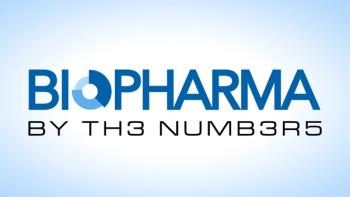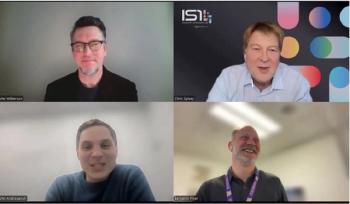
Analyzing the Safety and Scope of Next-Generation Gene Editing Platforms
Key Takeaways
- Prime editing offers precise genome corrections with a strong safety profile, crucial for regulatory confidence and long-term patient care.
- Delivery remains a significant challenge, especially for tissue-specific targets like cystic fibrosis, requiring innovative solutions.
In a session at the Cell and Gene Meeting on the Mesa, Prime Medicine CEO Allan Reine discussed how prime editing offers versatile, safe gene correction, but that delivery to target cells remains a major hurdle.
Gene-editing technology is rapidly advancing, transforming the outlook for treating complex human diseases, industry leaders said at the
Successful development requires companies to operate as two distinct entities: a technology company and a delivery company,
Prime editing (PE), developed in David Liu’s lab in 2019, is described as the most versatile gene editing technology, Reine pointed out. Unlike clustered regularly interspaced short palindromic repeats (CRISPR)/CRISPR-associated system (Cas) 9, which creates a potentially detrimental double-stranded break, PE employs a modified Cas enzyme and reverse transcriptase to generate only a single-stranded break. An RNA template is incorporated into the guide, allowing new base pairs to be directly transcribed into the genome. This mechanism enables the precise correction of deletions, insertions, and point mutations, including transversion mutations (1,2). The PE platform demonstrates a powerful safety advantage, Reine highlighted, stating, "We really don't see any off-target editing with our technology. We don't see any translocations, chromosomal rearrangements." This strong safety profile offers crucial confidence for biopharmaceutical regulatory submissions and long-term patient care, he also noted.
What hurdles remain for targeted delivery?
While gene-editing capabilities are advancing, the primary technical hurdle remains delivery, Reine said, explaining that preclinical studies have established proof-of-concept for delivery to the liver, ex-vivo hematopoietic stem cells, and the brain. However, tissue specificity introduces complexity. In the case of cystic fibrosis, for example, the delivery challenge is multifaceted, involving both the delivery vehicle (lipid nanoparticle or adeno-associated virus) and cell targeting. "One of the challenges when thinking about cystic fibrosis is … getting to the right cell type," Reine said. Specifically, the therapy must reach the bronchial epithelial progenitor cells; merely treating the superficial epithelial cells would result in a loss of efficacy as those cells turn over, he explained.
While this challenge remains, recent unexpected breakthroughs in delivery, such as direct injection for brain targets, illustrate the rapid evolution of the delivery space, which is fueling optimism for solutions across other hard-to-reach tissues, Reine stated.
What does enhanced editing versatility mean for CGT manufacturing?
The adoption of a modular platform approach is highly significant for CGT manufacturing and development. By concentrating on liver indications first, Reine expects subsequent programs to be "much cheaper and faster to the clinic" by leveraging chemistry, manufacturing, and controls and toxicology learnings from the initial indications.
Future growth relies heavily on addressing delivery to complex tissues, such as the brain, and on a cooperative regulatory environment.
There is a strong hope that FDA will view gene editing as a platform, accelerating clinical trials by minimizing repeated studies for multiple mutations within the same disease. Doing so would thereby reduce development redundancy and cost for the entire biopharmaceutical industry. This evolving regulatory framework is crucial for translating this versatile technology into accessible curative products, both Reine and Smith concluded.
References
1. Reine, A.; Smith, B. Investing in Innovation: Advancing Gene Editing Solutions for Cystic Fibrosis. Presentation at Cell and Gene Meeting on the Mesa, Oct. 6, 2025.
2. Chen, P. J.; Liu, D. R. Prime Editing for Precise and Highly Versatile Genome Manipulation. Nat. Rev. Genet. 2023, 24 (3), 161–177. DOI:
Newsletter
Stay at the forefront of biopharmaceutical innovation—subscribe to BioPharm International for expert insights on drug development, manufacturing, compliance, and more.





